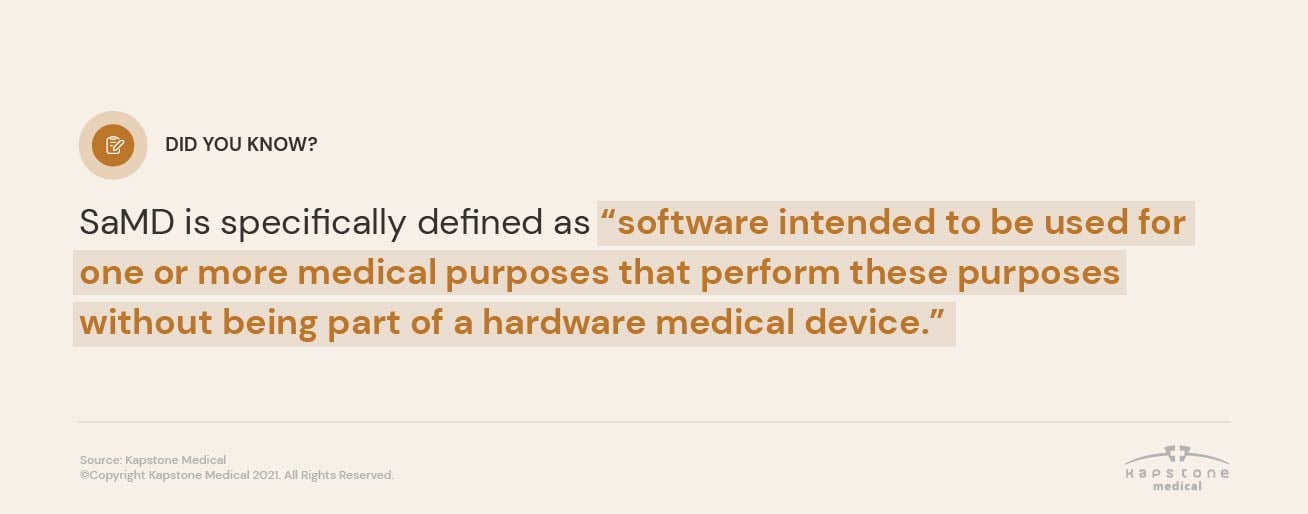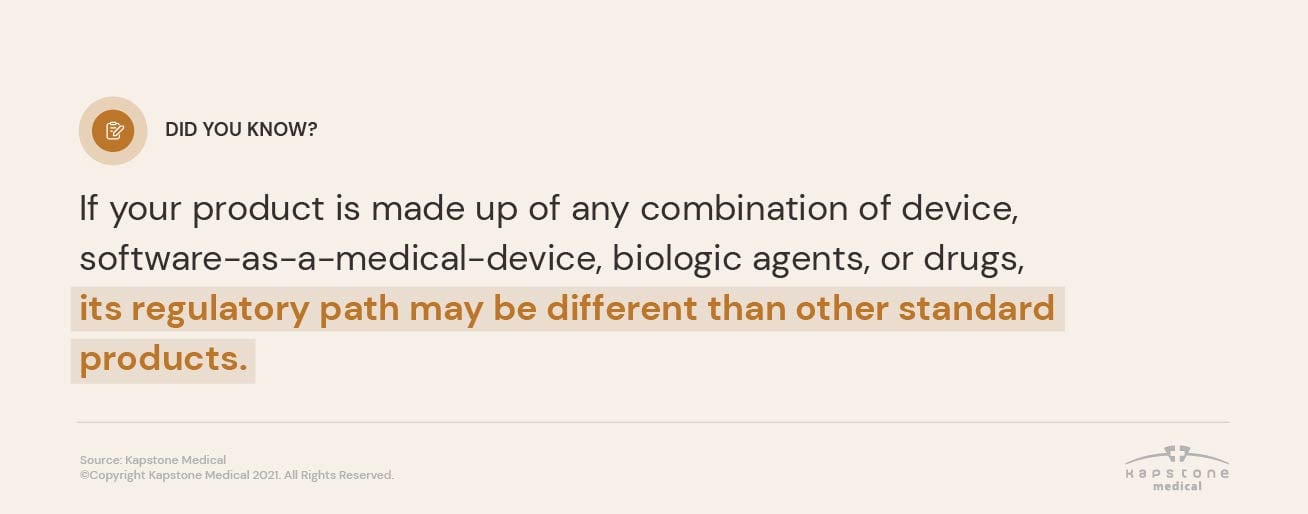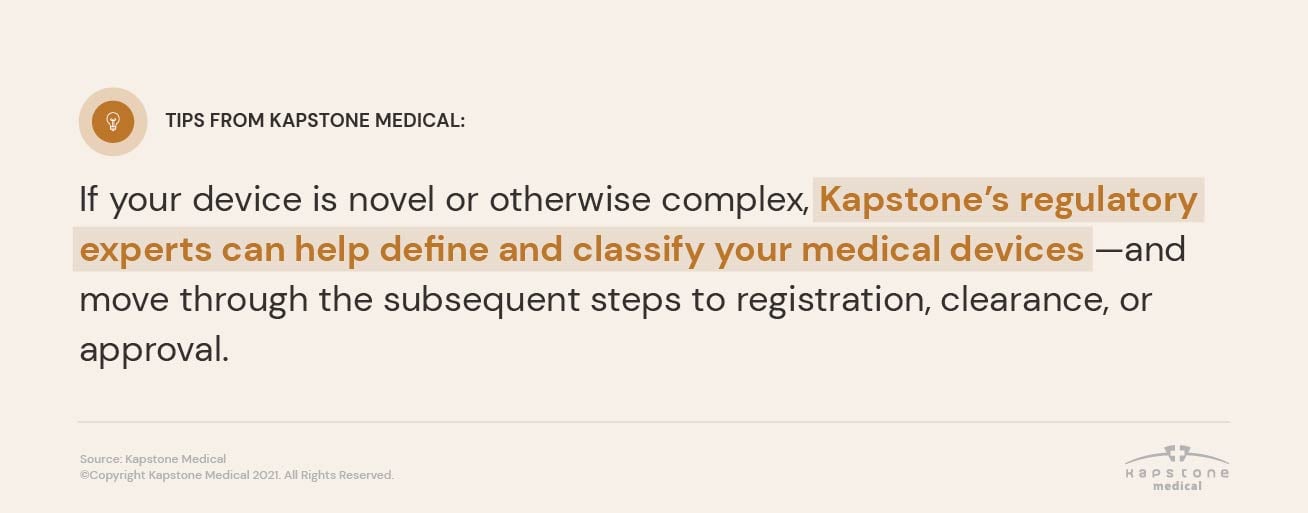FDA Medical Device Classification and Definitions
Regulatory affairs can often be the most challenging part of medical device development and commercialization. Whether you’re looking to launch a product in the US, EU, or global marketplace, you have to contend with a constantly-evolving regulatory landscape in which even the smallest documentation error can jeopardize your path forward.
So how can you streamline your path forward and ensure that you’re hitting the proper regulatory milestones for your target market?
In the US medical device market, which is overseen by the Food and Drug Administration (FDA), your milestones, as well as which divisions will review your application, will depend on your device’s risk classification.
In this blog, we’ll cover the relevant FDA divisions and classification system. If you have further questions or need assistance in bringing your own device through the regulatory process, please reach out. We routinely help our clients define and classify their devices. From there, we can also help your team identify and navigate the most efficient path to submission—and clearance or approval.

How does the FDA define and segment medical devices?
There are three FDA divisions that medical device companies should know about.
- Center for Devices and Radiological Health (CDRH)
- Center for Biologics Evaluation and Research (CBER)
- Center for Drug Evaluation and Research (CDER)
Each division oversees a different category of medical products. The Center for Devices and Radiological Health (CDRH) reviews submissions for the vast majority of medical devices, but other divisions do get involved for products with novel or complicated classifications (i.e. a drug delivery device that gets doubly segmented as a device and as a drug would need to be reviewed by either CDRH or the Center for Drug Evaluation and Research (CDER)).
Center for Devices and Radiological Health (CDRH)
The CDRH works to ensure that the US population has access to “high-quality, safe, and effective medical devices.” They review medical device registration, clearance, and approval submissions, oversee postmarket surveillance and reporting, and ensure that accurate information about medical devices and their performance is available to the US public.
Software as a Medical Device (SaMD)

The FDA has responded to the growing popularity of technology-enabled medical care by establishing a Digital Health Center of Excellence. This center, which sits within the Center for Devices and Radiological Health (CDRH), “empowers stakeholders to advance health care by fostering responsible and high-quality digital health innovation.”
Part of that evolving mission is to evaluate and improve the procedures that govern software as a medical device (SaMD). While software is by no means new to medical care, SaMD is specifically defined as “software intended to be used for one or more medical purposes that perform these purposes without being part of a hardware medical device.”
Further reading about SaMD:
- SaMD Key Definitions
- SaMD Risk Categorization
- Application of Quality Management Systems (QMS) in SaMD
- SaMD Clinical Evaluation
Center for Biologics Evaluation and Research (CBER)
The CBER, as its name implies, regulates biological products for human use in accordance with the Public Health Service Act and the Federal Food, Drug, and Cosmetic Act. Like the CDRH, the CBER is responsible for ensuring the safety and efficacy of biologic products, as well as making information about those products available to the general public.
Products that fall under the CBER’s purview include blood and blood products; cell, tissue, and gene therapies; vaccines; and allergenics. They also play a preventative and interventional role in protecting the public from emerging infectious diseases and bioterrorism.
Center for Drug Evaluation and Research (CDER)
The CDER works to ensure that over-the-counter (OTC), generic, and prescription drugs are safe and efficacious for human use. Their primary question, which is evaluated through numerous means, is whether a product’s benefits outweigh its risks.
The CDER is further divided into numerous offices, each of which is responsible for a certain category or subcategory of drugs. You can see a complete directory here. Products that fall under their purview include medicines, but also items like fluoride toothpaste, antiperspirants, and sunscreens.
How does the FDA classify medical devices?
The FDA defines a medical device as:
An instrument, apparatus, implement, machine, contrivance, implant, in vitro reagent, or other similar or related article, including a component part, or accessory which is:
- recognized in the official National Formulary, or the United States Pharmacopoeia, or any supplement to them,
- intended for use in the diagnosis of disease or other conditions, or in the cure, mitigation, treatment, or prevention of disease, in man or other animals, or
- intended to affect the structure or any function of the body of man or other animals, and which does not achieve its primary intended purposes through chemical action within or on the body of man or other animals and which is not dependent upon being metabolized for the achievement of its primary intended purposes. The term "device" does not include software functions excluded pursuant to section 520(o).
If your product does not meet this definition, it is not considered a medical device. It may still be regulated by other FDA departments.

Some medical products combine different mechanisms of action. If your product is made up of any combination of device, software-as-a-medical-device, biologic agents, or drugs, its regulatory path may look a little different. You can review the types of combination products here. If you have any questions, direct them to the team at Kapstone.
Every medical device falls into one of three FDA classes: I, II, or III. These classes are based on the perceived risk of the device, its intended use, and its indicated use. In turn, classification dictates the required scope of clinical evaluation and the type and amount of required premarket documentation.
- Class 1 | Minimal risk to the user (like face masks, tongue depressors, etc.)
- Class 2 | Medium risk to the user (like wheelchairs, medical wearables, etc.)
- Class 3 | Most risk to the user (like pacemakers, valve replacements, and other devices that are implanted into the body or used to sustain life)
How do you determine your device’s classification?
The first and easiest answer: consult with Kapstone’s regulatory experts. We regularly help our clients define and classify their medical devices—and move through the subsequent steps to registration, clearance, or approval.
You can also search for your device’s classification by inputting its name or device panel (medical specialty) into the FDA’s classification database here. Or, you can submit a formal 513(g) request for classification here.
If your device is novel or otherwise complex, we recommend consultation with experts.

Consult with Medical Device Experts
Ready to get to work? Get in touch with the Kapstone team today. We can integrate into your process as early as you’ll have us, leveraging our regulatory expertise to help you identify the most efficient path to regulatory approval.



